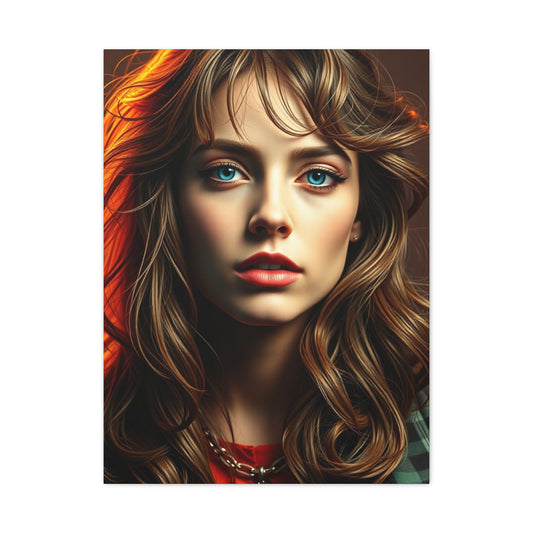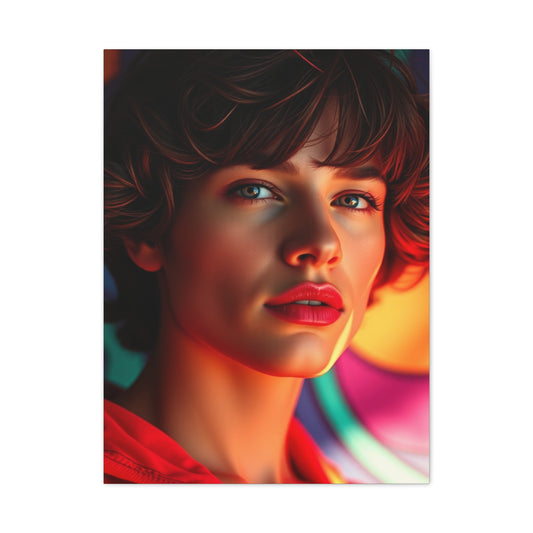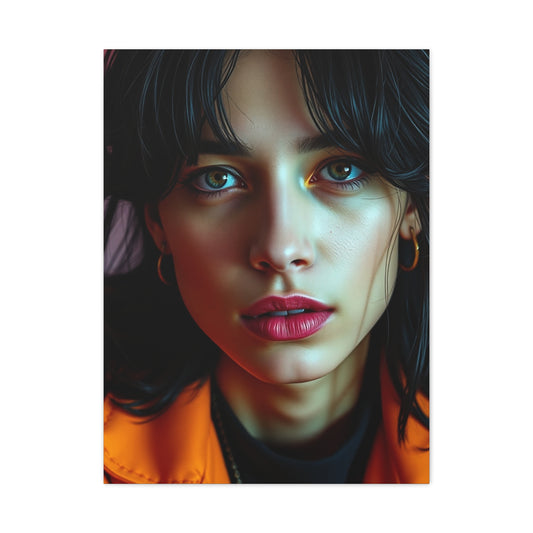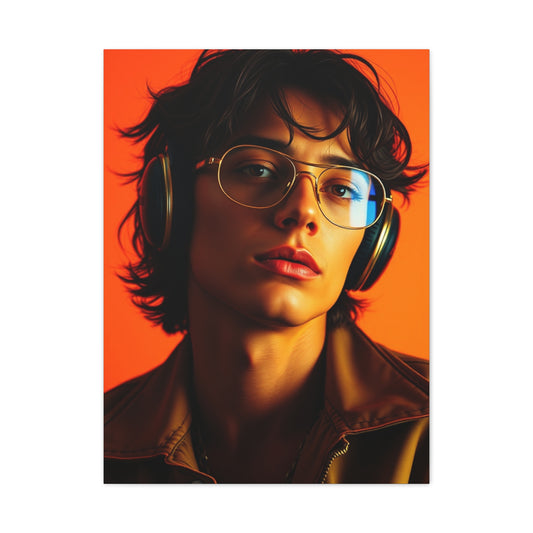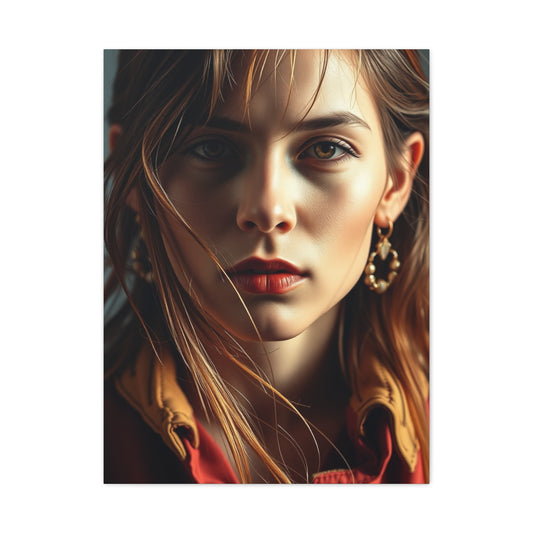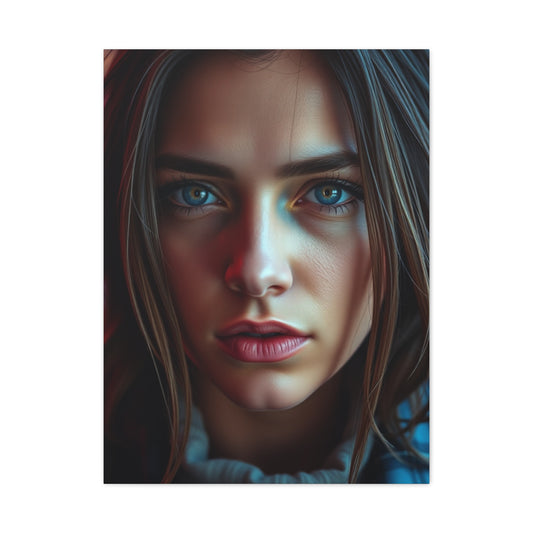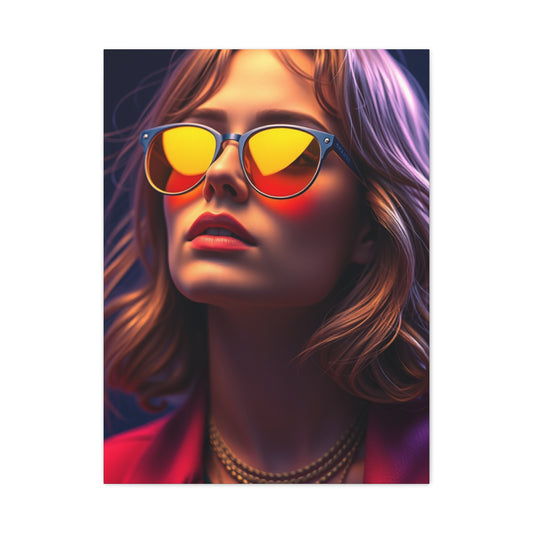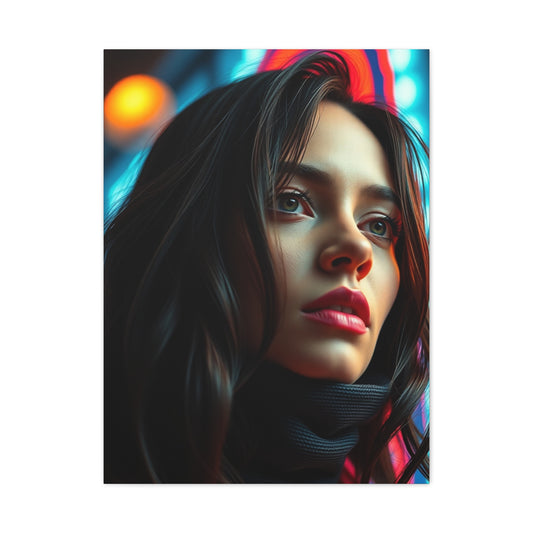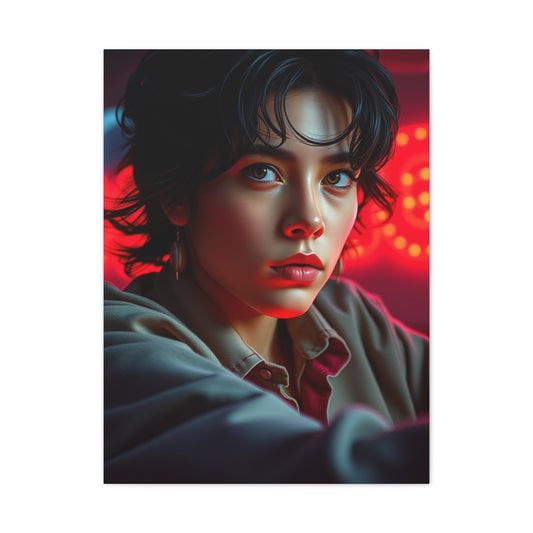Extraordinary 70’s Aesthetic Wall Art: The Transformative Creative Revolution of 1970s Art
The extraordinary decade of the 1970s represents one of history's most revolutionary periods in artistic expression, characterized by unprecedented creative liberation, radical experimentation, and transformative cultural movements that fundamentally altered the trajectory of contemporary art. This remarkable era witnessed the convergence of social upheaval, technological advancement, and artistic innovation that produced extraordinary masterworks and established enduring creative paradigms that continue influencing contemporary artists today.
During this pivotal decade, traditional artistic boundaries dissolved as revolutionary creators embraced unconventional mediums, challenged established hierarchies, and pioneered innovative approaches that questioned fundamental assumptions about art's role in society. The extraordinary artistic achievements of the 1970s emerged from a complex interplay of political activism, cultural rebellion, and philosophical transformation that created fertile ground for unprecedented creative exploration.
The era's extraordinary significance extends beyond mere aesthetic innovation to encompass profound social commentary, political resistance, and cultural transformation that utilized artistic expression as a vehicle for meaningful change. Artists of this period recognized their work's extraordinary potential to influence public consciousness, challenge societal norms, and advocate for marginalized communities through powerful visual narratives that transcended traditional artistic conventions.
Understanding the extraordinary artistic landscape of the 1970s requires examining multiple interconnected movements, technological innovations, and cultural phenomena that collectively created one of history's most dynamic and influential periods of creative production. These extraordinary developments continue resonating within contemporary artistic practice, making the decade's study essential for appreciating modern art's evolution and future directions.
Revolutionary Countercultural Movements Reshaping Artistic Expression
The extraordinary emergence of countercultural movements during the 1970s created unprecedented opportunities for artistic experimentation and social commentary that challenged conventional creative paradigms. These revolutionary movements, including anti-establishment activists, peace advocates, and cultural revolutionaries, fundamentally transformed artistic production by introducing alternative value systems that prioritized authentic expression over commercial considerations.
Hippie culture's extraordinary influence permeated artistic communities worldwide, introducing Eastern philosophical concepts, psychedelic aesthetics, and communal creation practices that revolutionized traditional artistic approaches. This movement's emphasis on consciousness expansion, spiritual exploration, and rejection of materialistic values created extraordinary opportunities for artists to explore non-traditional themes, experimental techniques, and collaborative creation processes that defied conventional artistic hierarchies.
The extraordinary impact of anti-war sentiment during the Vietnam conflict catalyzed artistic movements that utilized creative expression as powerful tools for political resistance and social commentary. Artists embraced their extraordinary responsibility to document social injustice, challenge governmental authority, and advocate for peaceful resolution through compelling visual narratives that reached audiences beyond traditional artistic circles.
Psychedelic art movements achieved extraordinary prominence during this period, incorporating hallucinogenic imagery, vibrant color palettes, and mind-altering visual effects that reflected altered consciousness experiences. These extraordinary artistic expressions appeared across multiple mediums including poster design, album covers, vehicle decoration, and architectural ornamentation, creating immersive environments that transported viewers into alternative perceptual realities.
The extraordinary fusion of music and visual art during the 1970s produced iconic collaborations between musicians and visual artists that created multimedia experiences transcending individual artistic disciplines. Legendary bands commissioned extraordinary visual works that complemented their musical innovations, resulting in comprehensive artistic statements that influenced both auditory and visual aesthetic development.
Underground art scenes flourished in major metropolitan centers, creating extraordinary networks of alternative galleries, experimental venues, and collaborative spaces that supported innovative artistic practices outside mainstream commercial systems. These extraordinary cultural ecosystems fostered artistic experimentation, cross-disciplinary collaboration, and alternative economic models that challenged traditional art market structures.
Revolutionary Urban Art Movements and Street Expression
The extraordinary emergence of street art during the 1970s represented a fundamental democratization of artistic expression that challenged elite institutional control over creative production and distribution. This revolutionary movement transformed urban environments into vast artistic canvases where creators could communicate directly with diverse audiences without mediation by traditional gatekeepers.
Graffiti art's extraordinary evolution from simple name-marking to sophisticated artistic expression demonstrated the movement's remarkable creative potential and cultural significance. Early practitioners developed extraordinary techniques for large-scale lettering, character creation, and environmental integration that established graffiti as a legitimate artistic medium deserving serious critical attention and historical documentation.
The extraordinary proliferation of street art across international urban centers created global networks of artistic exchange that transcended national boundaries and cultural barriers. Artists shared techniques, stylistic innovations, and philosophical approaches through informal communication channels that fostered extraordinary creative cross-pollination and collaborative development.
Revolutionary artists utilized public spaces as extraordinary platforms for political commentary, social criticism, and community engagement that bypassed traditional media censorship and commercial limitations. These extraordinary expressions often addressed local issues, celebrated community identity, and challenged systemic inequalities through accessible visual languages that resonated with diverse audiences.
The extraordinary relationship between street art and musical culture during the 1970s created synergistic movements that reinforced each other's cultural impact and aesthetic development. Hip-hop culture's emergence alongside graffiti art produced extraordinary cultural collaborations that integrated visual, musical, and performance elements into comprehensive artistic statements.
Legal and social challenges facing street artists produced extraordinary tensions that highlighted fundamental questions about public space ownership, artistic freedom, and cultural expression rights. These extraordinary conflicts generated important discussions about art's social function while catalyzing legal reforms that gradually recognized street art's legitimate cultural contributions.
The extraordinary technical innovations developed by street artists included specialized tools, unique materials, and efficient application methods that enabled rapid creation of sophisticated works under challenging conditions. These extraordinary developments demonstrated artists' remarkable adaptability and resourcefulness while contributing to the medium's continued evolution and refinement.
Revolutionary Feminist Artistic Movements and Gender Expression
The extraordinary feminist art movement of the 1970s fundamentally challenged patriarchal artistic traditions while creating unprecedented opportunities for women artists to explore authentic expressions of female experience and identity. This revolutionary movement questioned traditional subject matter, challenged institutional discrimination, and pioneered innovative artistic approaches that centered women's perspectives and experiences.
Performance art emerged as an extraordinary medium particularly suited to feminist artistic exploration, enabling artists to utilize their bodies as primary creative materials while addressing issues of sexuality, identity, power, and social conditioning. These extraordinary performances often challenged viewers' expectations while creating intimate encounters that fostered empathy and understanding across gender lines.
The extraordinary emphasis on collaborative creation within feminist artistic communities produced innovative working methods that challenged individualistic artistic traditions. Women artists developed extraordinary support networks, collective exhibition opportunities, and alternative economic models that sustained creative production while building lasting professional relationships and mentorship systems.
Revolutionary feminist artists reclaimed traditionally devalued domestic arts including needlework, ceramics, and textile production, elevating these practices to fine art status while celebrating women's historical creative contributions. These extraordinary rehabilitations challenged hierarchical distinctions between craft and art while honoring generational knowledge transmission between women creators.
The extraordinary documentation projects undertaken by feminist artists during the 1970s preserved women's experiences, challenged historical erasure, and created alternative narrative frameworks that countered male-dominated cultural stories. These extraordinary archives continue providing essential resources for contemporary researchers and artists exploring gender-related themes and women's artistic heritage.
Consciousness-raising activities within feminist artistic communities produced extraordinary collaborative works that merged personal experience with political analysis, creating powerful artistic statements that addressed systemic oppression while celebrating women's resilience and creativity. These extraordinary projects demonstrated art's capacity for fostering social transformation through collective action and shared storytelling.
The extraordinary impact of feminist artistic movements extended beyond immediate creative production to influence institutional reforms, educational curriculum development, and critical discourse that gradually transformed art world structures. These extraordinary achievements created lasting changes that continue benefiting contemporary women artists and expanding creative opportunities for marginalized communities.
Technological Innovation and Futuristic Artistic Vision
The extraordinary technological developments of the 1970s, particularly space exploration achievements and computer technology advancement, profoundly influenced artistic imagination while creating new mediums and techniques for creative expression. The moon landing's psychological impact generated extraordinary interest in science fiction themes, space exploration imagery, and futuristic aesthetic visions that permeated multiple artistic disciplines.
Science fiction art achieved extraordinary sophistication during this period as artists developed detailed visual languages for depicting imaginary worlds, advanced technologies, and speculative futures. These extraordinary creations influenced film production, literature illustration, and popular culture while establishing science fiction as a legitimate artistic genre deserving serious critical attention and academic study.
The extraordinary emergence of cyberpunk aesthetics during the late 1970s reflected growing awareness of technology's transformative social potential alongside concerns about digital surveillance, corporate power, and human agency in technologically mediated environments. Artists created extraordinary visual narratives exploring these themes through dystopian imagery that presciently anticipated contemporary digital culture challenges.
Video art's extraordinary development during the 1970s represented one of the decade's most significant artistic innovations, enabling creators to explore time-based mediums while incorporating electronic technologies into artistic practice. These extraordinary experiments produced innovative works that challenged traditional artistic categories while establishing video as a legitimate fine art medium with unique expressive capabilities.
Computer-generated art began emerging during this extraordinary period as pioneering artists gained access to early digital systems and began exploring algorithmic creation processes. These extraordinary early experiments established fundamental principles for digital art development while demonstrating technology's creative potential beyond purely utilitarian applications.
The extraordinary integration of electronic music with visual art during the 1970s produced multimedia performances that prefigured contemporary digital art practices. Artists created extraordinary synaesthetic experiences combining sound, light, and visual elements through innovative technical systems that pushed available technology beyond intended limitations.
Alternative energy exploration during the 1970s inspired extraordinary artistic projects that incorporated solar power, wind generation, and environmental systems into creative works. These extraordinary eco-technological artworks demonstrated artists' engagement with environmental concerns while pioneering sustainable art practices that continue influencing contemporary ecological art movements.
Architectural Innovation and Environmental Design Revolution
The extraordinary architectural movements of the 1970s fundamentally transformed built environment design while challenging traditional relationships between structure, function, and aesthetic expression. Brutalist architecture achieved extraordinary prominence through monumental concrete constructions that emphasized raw material properties while creating dramatic spatial experiences that influenced public architecture worldwide.
High-tech architectural approaches produced extraordinary buildings that celebrated structural engineering while incorporating advanced materials and construction techniques into visible design elements. These extraordinary structures demonstrated architecture's potential for technological integration while creating dynamic visual experiences that influenced subsequent architectural development and urban planning approaches.
Postmodern architectural theory emerged during this extraordinary period, challenging modernist orthodoxy while advocating for eclectic design approaches that incorporated historical references, popular culture elements, and vernacular building traditions. This extraordinary theoretical revolution influenced architectural education, professional practice, and public discourse about built environment design and cultural meaning.
Deconstructivist architectural experiments produced extraordinary structures that challenged conventional spatial relationships while exploring non-linear design processes and fragmented formal compositions. These extraordinary buildings questioned fundamental architectural assumptions while creating disorienting yet compelling spatial experiences that influenced contemporary architectural theory and practice.
Organic architectural approaches achieved extraordinary development during the 1970s through renewed interest in environmental integration, natural material utilization, and biomorphic design principles. These extraordinary projects demonstrated architecture's potential for ecological harmony while creating spaces that enhanced human connection with natural systems and seasonal cycles.
Community-based architectural projects flourished during this extraordinary period as architects engaged with social activism while developing participatory design processes that empowered local communities to influence built environment creation. These extraordinary collaborations produced innovative housing solutions, community centers, and public spaces that reflected local needs and cultural values.
The extraordinary emergence of adaptive reuse projects during the 1970s demonstrated growing environmental consciousness while creating innovative approaches to historic preservation and urban regeneration. These extraordinary conversions transformed industrial buildings, warehouses, and obsolete structures into vibrant cultural spaces while preserving architectural heritage and reducing construction waste.
Minimalist Aesthetic Philosophy and Reductive Expression
The extraordinary minimalist movement that flourished during the 1970s represented a radical departure from expressive artistic traditions while advocating for reduced formal vocabularies that emphasized essential elements and eliminated superfluous decoration. This revolutionary aesthetic philosophy influenced multiple artistic disciplines while challenging viewers to engage with subtle variations and spatial relationships rather than narrative content.
Minimalist sculpture achieved extraordinary refinement during this period through artists who explored industrial materials, geometric forms, and serial repetition to create works that existed in direct dialogue with architectural spaces. These extraordinary objects challenged traditional sculpture categories while creating immersive experiences that transformed viewers' spatial perception and environmental awareness.
The extraordinary theoretical frameworks supporting minimalism during the 1970s drew from diverse philosophical sources including phenomenology, Eastern meditation practices, and industrial design principles. These extraordinary intellectual foundations provided rigorous justification for reductive artistic approaches while establishing minimalism as a serious aesthetic philosophy rather than merely fashionable styling.
Color field painting reached extraordinary heights during this period as artists explored pure chromatic relationships while eliminating representational content and gestural expressiveness. These extraordinary canvases created immersive color experiences that transcended traditional painting categories while influencing contemporary understanding of color psychology and perceptual response.
The extraordinary institutional support for minimalist art during the 1970s reflected growing recognition of the movement's cultural significance while providing resources for large-scale installations and comprehensive exhibitions. Museums, galleries, and collectors embraced extraordinary minimalist works while contributing to the movement's historical legitimization and critical documentation.
Minimalist architecture and design achieved extraordinary influence during this period through practitioners who applied reductive principles to built environments, furniture design, and product development. These extraordinary applications demonstrated minimalism's broader cultural relevance while creating functional objects and spaces that embodied aesthetic philosophy through practical utility.
The extraordinary legacy of 1970s minimalism continues influencing contemporary artistic practice through ongoing engagement with reductive strategies, spatial awareness, and material investigation. Contemporary artists regularly reference extraordinary minimalist precedents while adapting core principles to address current cultural concerns and technological possibilities.
Pop Art Evolution and Consumer Culture Commentary
The extraordinary evolution of pop art during the 1970s represented sophisticated engagement with consumer culture, mass media, and celebrity phenomenon while maintaining critical distance from the commercial systems these works depicted. This revolutionary artistic approach challenged traditional distinctions between high and low culture while creating accessible works that resonated with broad public audiences.
Screen printing technologies achieved extraordinary refinement during this period, enabling artists to produce multiple iterations of iconic images while exploring mechanical reproduction's aesthetic possibilities. These extraordinary technical developments supported pop art's theoretical foundations while creating efficient production methods that paralleled commercial manufacturing processes.
The extraordinary expansion of pop art beyond traditional mediums during the 1970s included experimental approaches to sculpture, installation, performance, and environmental art that extended the movement's critical engagement with contemporary culture. Artists created extraordinary three-dimensional works that transformed gallery spaces while challenging viewers' expectations about artistic experience and commercial aesthetics.
Celebrity portraiture reached extraordinary sophistication during this period as pop artists developed nuanced approaches to fame, media representation, and public persona construction. These extraordinary works examined celebrity culture's psychological impact while creating iconic images that simultaneously celebrated and critiqued mass media's influence on personal identity formation.
The extraordinary critical discourse surrounding pop art during the 1970s reflected growing academic interest in popular culture studies while establishing theoretical frameworks for analyzing commercial imagery's artistic deployment. Scholars and critics developed extraordinary analytical tools that supported pop art's intellectual legitimacy while contributing to broader cultural studies development.
International pop art movements achieved extraordinary diversity during this period as artists from different cultural contexts adapted core principles to address local conditions, political situations, and aesthetic traditions. These extraordinary variations demonstrated pop art's global relevance while creating culturally specific expressions that enriched the movement's overall theoretical and practical development.
The extraordinary commercial success of pop art during the 1970s created complex relationships between artistic critique and market participation that generated ongoing debates about authenticity, commodification, and resistance within capitalist systems. These extraordinary tensions highlighted fundamental questions about art's social function while contributing to contemporary discussions about cultural production and economic systems.
Conceptual Art Movements and Idea-Based Expression
The extraordinary development of conceptual art during the 1970s fundamentally challenged traditional artistic categories while prioritizing intellectual content over aesthetic objects. This revolutionary movement questioned art's material requirements while exploring language, documentation, and systematic investigation as primary artistic mediums that could communicate complex ideas without conventional visual representation.
Documentation practices achieved extraordinary sophistication within conceptual art communities as artists developed innovative approaches to recording ephemeral works, process-based investigations, and site-specific interventions. These extraordinary archival strategies preserved temporary artworks while creating secondary objects that functioned as both historical records and independent artistic statements.
The extraordinary theoretical foundations supporting conceptual art during the 1970s drew from diverse intellectual sources including linguistics, philosophy, anthropology, and systems theory. These extraordinary interdisciplinary connections positioned conceptual art within broader intellectual movements while demonstrating visual art's capacity for rigorous theoretical engagement and cultural analysis.
Language-based artworks achieved extraordinary prominence during this period as artists explored textual expression, verbal instructions, and written descriptions as primary creative mediums. These extraordinary works challenged traditional assumptions about artistic communication while creating intimate relationships between artists and audiences through direct verbal exchange rather than visual mediation.
Process art emerged as an extraordinary subset of conceptual practice that emphasized creation procedures over finished products while documenting temporal changes, material transformations, and systematic investigations. These extraordinary works demonstrated art's capacity for scientific investigation while creating poetic experiences that transcended purely analytical approaches to natural phenomena and cultural systems.
The extraordinary institutional challenges presented by conceptual art during the 1970s forced museums, galleries, and collectors to develop new acquisition, exhibition, and preservation strategies adapted to non-traditional artistic formats. These extraordinary adaptations influenced contemporary art institutional practices while establishing precedents for supporting experimental artistic approaches.
Mail art networks flourished during this extraordinary period, creating global communication systems that enabled conceptual artists to exchange works, ideas, and collaborative projects across international boundaries. These extraordinary networks prefigured digital communication systems while demonstrating art's capacity for creating alternative distribution channels independent of commercial gallery systems.
Earth Art and Environmental Artistic Integration
The extraordinary emergence of earth art during the 1970s represented radical expansion of artistic practice into natural environments while creating monumental works that existed in direct dialogue with landscape, geology, and ecological systems. This revolutionary movement challenged gallery-based exhibition models while creating site-specific installations that required pilgrimage-like journeys for direct experience.
Large-scale earthworks achieved extraordinary ambition during this period through projects that manipulated vast quantities of natural materials while creating permanent alterations to remote landscape sites. These extraordinary interventions demonstrated individual artists' capacity for environmental transformation while raising important questions about land use, ownership rights, and ecological impact.
The extraordinary documentation challenges presented by earth art led to innovative approaches to photography, film, and cartographic representation that attempted to convey large-scale spatial experiences through traditional mediums. These extraordinary documentation projects created secondary artworks that functioned independently while providing access to remote sites for broader audiences.
Environmental consciousness within earth art communities produced extraordinary works that celebrated natural processes while advocating for ecological protection and sustainable land use practices. Artists created extraordinary projects that highlighted environmental degradation while proposing alternative relationships between human activity and natural systems.
The extraordinary theoretical frameworks supporting earth art during the 1970s connected artistic practice with environmental science, geology, and indigenous land use traditions while challenging Western cultural assumptions about landscape ownership and modification rights. These extraordinary intellectual connections positioned earth art within broader environmental movement while demonstrating art's capacity for ecological advocacy.
Site-specific installations achieved extraordinary sophistication during this period as artists developed detailed understanding of particular locations while creating works that emerged from extended engagement with local conditions, histories, and ecological characteristics. These extraordinary projects demonstrated art's potential for place-based meaning creation while challenging portable object-based artistic traditions.
The extraordinary legacy of 1970s earth art continues influencing contemporary environmental art practice through ongoing engagement with climate change, habitat destruction, and sustainable development challenges. Contemporary artists regularly reference extraordinary earth art precedents while adapting large-scale intervention strategies to address current ecological crises.
Performance Art Innovation and Body-Based Expression
The extraordinary development of performance art during the 1970s created unprecedented opportunities for artists to explore temporality, embodiment, and direct audience engagement while challenging traditional object-based artistic production. This revolutionary medium enabled creators to investigate personal identity, social relationships, and political resistance through live actions that existed only in present moments.
Ritual and ceremonial elements achieved extraordinary prominence within performance art practice as artists drew inspiration from diverse cultural traditions while creating contemporary ceremonies that addressed personal transformation, community building, and spiritual exploration. These extraordinary works demonstrated art's capacity for creating meaningful experiences that transcended entertainment while fostering genuine human connection and collective reflection.
The extraordinary risks undertaken by performance artists during this period included physical danger, psychological vulnerability, and social transgression that pushed artistic practice toward extreme experiences while challenging audiences to confront uncomfortable truths about violence, sexuality, and power relationships. These extraordinary works generated significant controversy while establishing performance art's capacity for social provocation and cultural critique.
Endurance-based performances achieved extraordinary duration during the 1970s as artists explored extended temporal experiences while investigating physical limitation, mental endurance, and audience commitment. These extraordinary works created unique viewing experiences that required significant time investment while demonstrating art's potential for creating transformative encounters through sustained engagement.
The extraordinary intersection between performance art and political activism during this period produced powerful works that utilized artistic presentation to amplify social justice messages while creating memorable experiences that transcended traditional protest formats. Artists developed extraordinary strategies for combining aesthetic experience with political communication while reaching diverse audiences through compelling performance presentations.
Documentation strategies for performance art achieved extraordinary sophistication during the 1970s as artists and collaborators developed innovative approaches to preserving ephemeral works through photography, video recording, and written description. These extraordinary archives created lasting records while raising important questions about original experience versus mediated representation.
International performance art networks flourished during this extraordinary period, creating global communities that shared techniques, theoretical frameworks, and collaborative opportunities across cultural boundaries. These extraordinary connections facilitated artistic exchange while demonstrating performance art's universal appeal and cross-cultural communication potential.
Photography as Artistic Medium and Documentary Practice
The extraordinary elevation of photography to fine art status during the 1970s represented significant institutional recognition while creating new opportunities for photographers to explore artistic expression beyond commercial or journalistic applications. This revolutionary development challenged traditional medium hierarchies while establishing photography as legitimate artistic practice deserving serious critical attention and museum collection.
Conceptual photography achieved extraordinary sophistication during this period as artists utilized camera technologies to investigate perception, representation, and reality construction rather than simply recording external appearances. These extraordinary works challenged photography's documentary assumptions while creating complex artistic statements that engaged with contemporary theoretical discourse about media, truth, and representation.
The extraordinary development of color photography during the 1970s overcame previous technical limitations while creating new aesthetic possibilities that influenced both artistic and commercial practice. Artists explored extraordinary color relationships, saturated palettes, and chromatic narratives that demonstrated color photography's unique expressive potential while challenging black-and-white photography's artistic dominance.
Street photography achieved extraordinary artistic recognition during this period through practitioners who elevated documentary practice to fine art status while creating compelling social narratives that captured urban life's complexity, diversity, and authentic human experience. These extraordinary works demonstrated photography's capacity for social documentation while creating lasting artistic statements about contemporary culture.
The extraordinary theoretical discourse surrounding photography during the 1970s established rigorous intellectual frameworks for analyzing photographic representation while connecting camera-based practice with broader cultural studies, media theory, and critical analysis. These extraordinary intellectual developments supported photography's academic legitimacy while providing analytical tools for understanding photographic meaning construction.
Alternative photographic processes achieved extraordinary artistic application during this period as photographers explored historical techniques, experimental chemistry, and non-traditional materials to create unique works that emphasized craft knowledge while challenging industrial photography's standardization. These extraordinary approaches demonstrated photography's continued evolution while preserving traditional technical knowledge.
The extraordinary influence of photography on other artistic mediums during the 1970s included significant impact on painting, sculpture, and printmaking as artists incorporated photographic imagery, mechanical reproduction techniques, and camera-based perception into traditional practices. These extraordinary cross-medium influences demonstrated photography's broader cultural significance while challenging medium-specific artistic boundaries.
Video Art Emergence and Electronic Media Innovation
The extraordinary emergence of video art during the 1970s represented one of the decade's most significant artistic innovations while creating entirely new possibilities for time-based artistic expression that combined visual imagery with electronic manipulation, sound integration, and temporal sequence. This revolutionary medium attracted artists from diverse backgrounds while establishing video as legitimate fine art practice deserving institutional support and critical analysis.
Portable video equipment became available during this extraordinary period, enabling individual artists to access recording technologies previously limited to professional television production while creating intimate, experimental works that explored personal expression, social commentary, and formal investigation. These extraordinary technical developments democratized video production while supporting independent artistic creation outside commercial media systems.
The extraordinary aesthetic possibilities unique to video during the 1970s included electronic image manipulation, real-time feedback effects, and signal processing techniques that created visual experiences impossible in traditional mediums. Artists explored extraordinary effects including color saturation, image distortion, and temporal manipulation that established video art's distinctive visual language while demonstrating electronic media's creative potential.
Installation approaches to video art achieved extraordinary sophistication during this period as artists created immersive environments that integrated multiple screens, surround sound, and interactive elements to create comprehensive experiences that transformed gallery spaces. These extraordinary installations challenged traditional viewing conventions while creating new relationships between artwork and audience through environmental integration.
The extraordinary documentation of performance art through video during the 1970s created important archival records while establishing video's capacity for preserving ephemeral works and reaching broader audiences. These extraordinary documentation projects raised important questions about original versus recorded experience while creating independent artworks that functioned beyond their documentary purposes.
Narrative experimentation within video art achieved extraordinary innovation during this period as artists developed non-linear storytelling techniques, fragmented temporal structures, and experimental editing approaches that challenged conventional film and television narrative conventions. These extraordinary works demonstrated video's potential for alternative communication while creating compelling artistic statements about contemporary experience.
The extraordinary institutional challenges presented by video art during the 1970s forced museums and galleries to develop new technical infrastructure, exhibition strategies, and preservation approaches adapted to electronic media requirements. These extraordinary adaptations established important precedents for supporting technology-based artistic practice while contributing to contemporary digital art institutional frameworks.
International Artistic Exchange and Global Movements
The extraordinary international artistic exchange during the 1970s created unprecedented opportunities for cross-cultural collaboration while facilitating global circulation of artistic ideas, techniques, and aesthetic approaches that enriched local artistic communities and challenged cultural insularity. This revolutionary period witnessed significant artistic migration, international exhibition exchange, and collaborative projects that transcended national boundaries.
Latin American artistic movements achieved extraordinary international recognition during this period through practitioners who combined indigenous cultural traditions with contemporary artistic approaches while addressing political oppression, social inequality, and cultural identity. These extraordinary works demonstrated art's capacity for cultural preservation while creating powerful statements about colonial legacy and contemporary resistance.
European artistic communities maintained extraordinary innovation during the 1970s through continued experimental practice that built upon historical avant-garde traditions while incorporating contemporary technological developments and social concerns. These extraordinary works demonstrated European art's continued evolution while maintaining connections to established artistic heritage and institutional support systems.
Asian artistic movements gained extraordinary visibility during this period as increased international travel and communication enabled broader appreciation of non-Western artistic traditions while facilitating meaningful cultural exchange between Eastern and Western artistic communities. These extraordinary connections challenged Eurocentric artistic assumptions while creating innovative hybrid practices that combined diverse cultural approaches.
African artistic diaspora communities created extraordinary works during the 1970s that addressed displacement, cultural preservation, and identity formation while establishing important connections between traditional African artistic practices and contemporary international art movements. These extraordinary contributions challenged Western artistic dominance while demonstrating African culture's continued vitality and innovation.
The extraordinary development of alternative art spaces during the 1970s created international networks of experimental venues that supported innovative artistic practice while providing platforms for cultural exchange and collaborative projects. These extraordinary spaces fostered artistic experimentation while creating lasting relationships between international artistic communities.
Traveling exhibitions achieved extraordinary impact during this period through comprehensive presentations that introduced diverse audiences to innovative artistic movements while facilitating cultural understanding and artistic appreciation across national boundaries. These extraordinary exhibitions contributed to global artistic discourse while supporting individual artists' international recognition and career development.
Contemporary Legacy and Continuing Influence
The extraordinary artistic innovations of the 1970s established enduring precedents that continue influencing contemporary artistic practice while providing inspiration for current artists investigating similar themes, techniques, and cultural concerns. This revolutionary decade's contributions remain relevant for understanding current artistic development while offering valuable insights into art's social function and cultural significance.
Contemporary street art movements regularly reference extraordinary 1970s precedents while adapting urban intervention strategies to address current social issues including gentrification, environmental crisis, and political resistance. These ongoing connections demonstrate street art's continued evolution while honouring foundational contributions from pioneering practitioners.
Digital art practices frequently incorporate extraordinary techniques and theoretical frameworks developed during the 1970s while adapting conceptual approaches, documentation strategies, and institutional critique methods to contemporary technological contexts. These connections demonstrate conceptual art's continued relevance while highlighting art's capacity for technological adaptation.
Environmental art movements continue building upon extraordinary 1970s earth art precedents while addressing climate change, habitat destruction, and sustainable development through large-scale interventions and site-specific installations. These ongoing developments demonstrate earth art's prescient environmental consciousness while adapting large-scale artistic strategies to current ecological crises.
Feminist art practices maintain extraordinary connections to 1970s foundations while expanding original concerns to address intersectional identity issues, global women's rights, and contemporary gender discourse. These continuing developments demonstrate feminist art's ongoing evolution while honouring foundational achievements that established women's equal participation in artistic production.
Performance art continues exploring extraordinary territories pioneered during the 1970s while incorporating digital technologies, global communication systems, and contemporary social concerns into time-based artistic practice. These developments demonstrate performance art's continued vitality while adapting core principles to current cultural contexts and technological possibilities.
The extraordinary institutional changes initiated during the 1970s continue influencing contemporary art world structures while providing frameworks for supporting experimental practice, alternative exhibition models, and diverse artistic communities. These lasting impacts demonstrate the decade's fundamental influence on current artistic infrastructure while highlighting ongoing needs for institutional adaptation and reform.
Conclusion
The artistic achievements of the 1970s stand as a monumental chapter in the history of modern art—one defined by revolutionary innovation, radical experimentation, and bold challenges to the status quo. This transformative decade marked a turning point not only in the aesthetic direction of contemporary art but also in its purpose, accessibility, and cultural resonance. Artists across the globe used their work to critique dominant ideologies, confront institutional power structures, and articulate new visions of identity, politics, and society. As a result, the 1970s remain one of the most creatively rich and socially engaged periods in the modern artistic timeline.
What distinguishes the 1970s is not only the diversity of artistic styles—ranging from conceptual art and performance to land art, feminist art, and experimental media—but also the decade's broader redefinition of what art could be. Artists broke free from traditional gallery and museum systems, embracing non-commercial spaces, public interventions, and community-centered projects. The boundaries between artist, audience, and context were deliberately blurred, expanding the role of the viewer and democratizing access to art. These movements laid critical groundwork for many of the participatory and socially engaged practices we see today.
Beyond stylistic and material innovation, the 1970s profoundly altered how art relates to broader social, political, and environmental issues. Activist art flourished, responding to civil rights movements, second-wave feminism, anti-war protests, and ecological concerns. Art was increasingly recognized as a vehicle for social change, capable of mobilizing public consciousness and inspiring collective action. This period reasserted the idea that art is not a detached aesthetic object but an active, responsive, and deeply human form of communication.
Equally significant was the expansion of global artistic dialogue. Artists from non-Western regions, historically marginalized groups, and Indigenous communities began to gain visibility and voice within the international art scene. This shift laid the foundation for today’s more inclusive, decentralized, and cross-cultural approach to art history and curation. The global consciousness that emerged in the 1970s continues to shape artistic collaborations and policies that emphasize diversity, equity, and representation.
The legacy of the 1970s is not confined to its specific artworks or artistic figures. Rather, its most enduring contribution lies in the paradigm shift it triggered—a shift in how art is conceived, produced, distributed, and experienced. It challenged the definition of the artist, the role of institutions, and the boundaries between disciplines. These foundational changes remain deeply embedded in contemporary artistic practice and cultural discourse.
As we look to the future, the principles established during the 1970s offer both inspiration and strategic frameworks for navigating today’s evolving challenges. Issues such as rapid technological transformation, climate change, and global migration require artists and institutions to think with the same boldness, adaptability, and critical vision that defined the 1970s. Just as artists of that era reimagined art’s relationship with society, so too must contemporary creators respond to our own time with innovation rooted in social consciousness and cultural connectivity.
In conclusion, the 1970s represent far more than a historical moment—they offer a living legacy of creative resistance, intellectual exploration, and transformative potential. For artists, cultural leaders, and communities worldwide, this decade remains an enduring source of inspiration and a powerful reminder of art’s capacity to question, disrupt, heal, and ultimately connect humanity across time and place.



